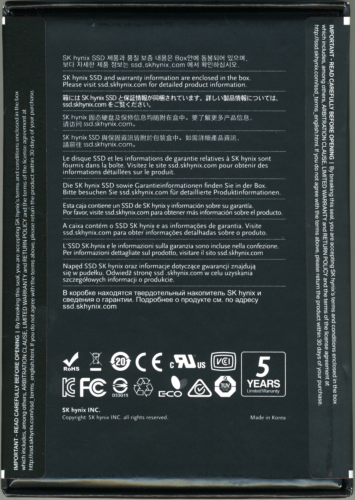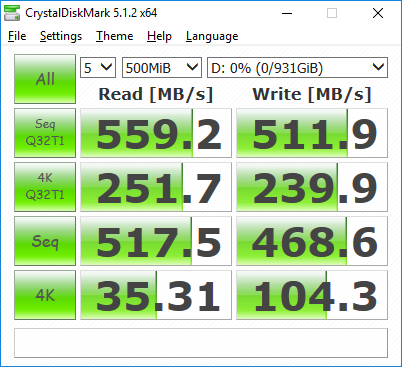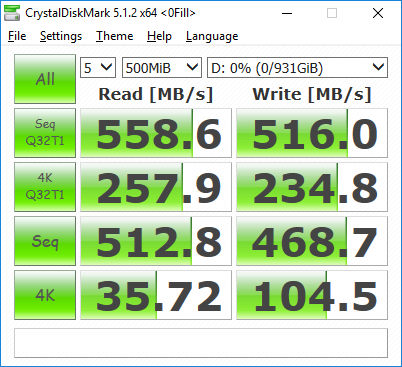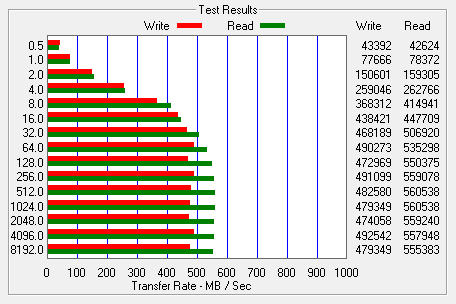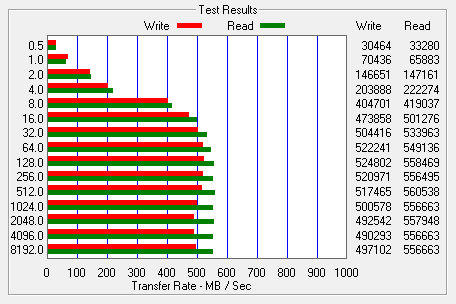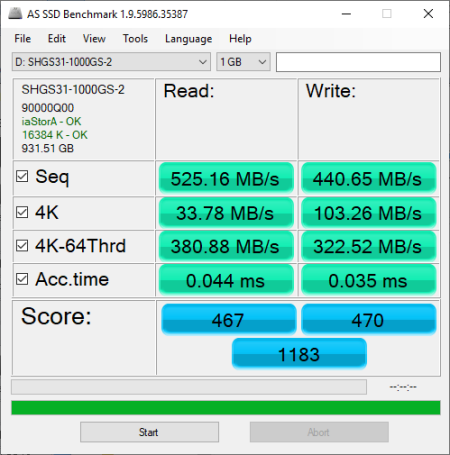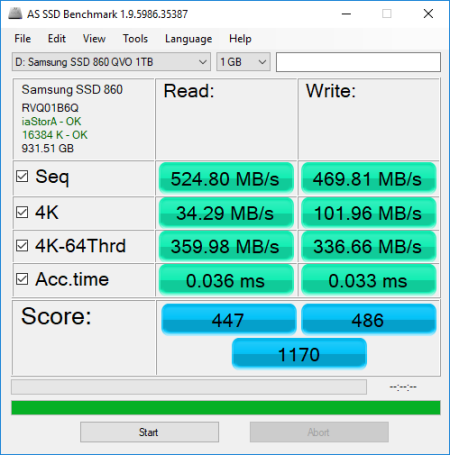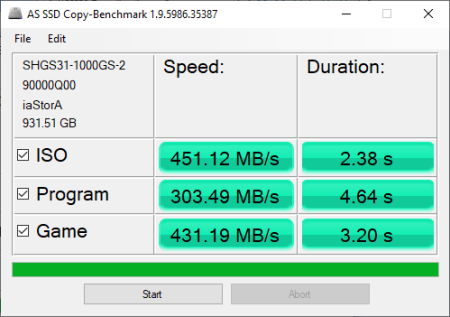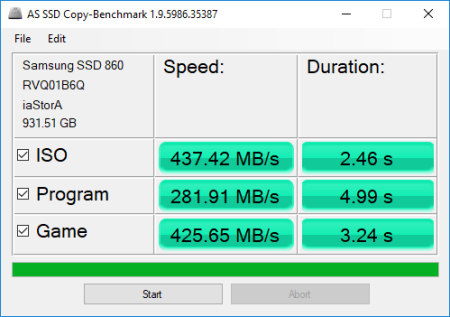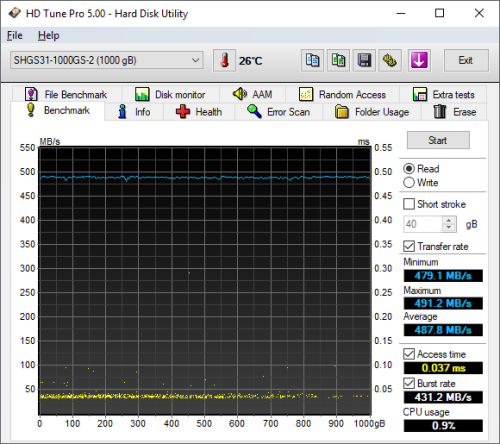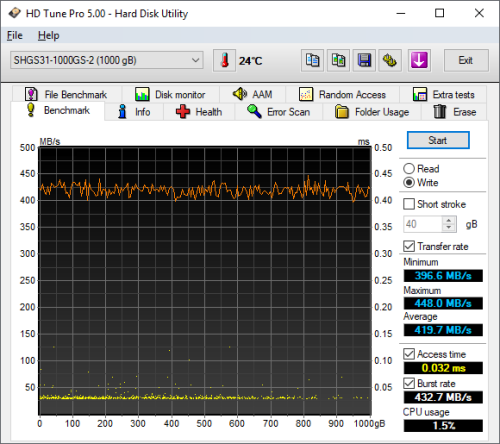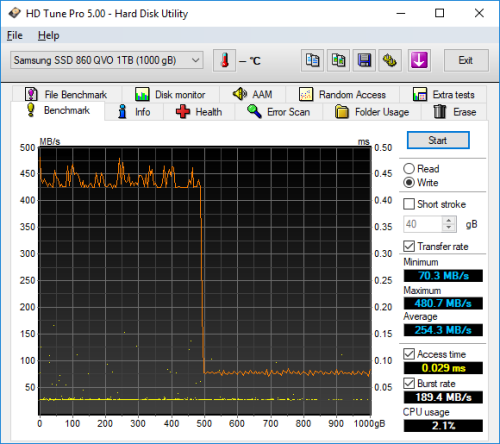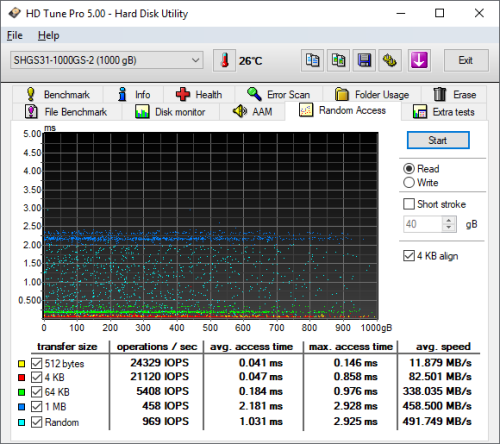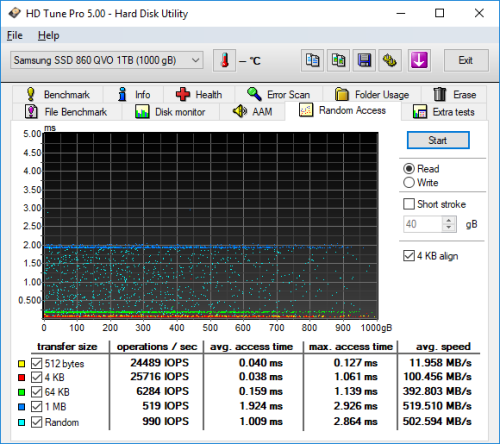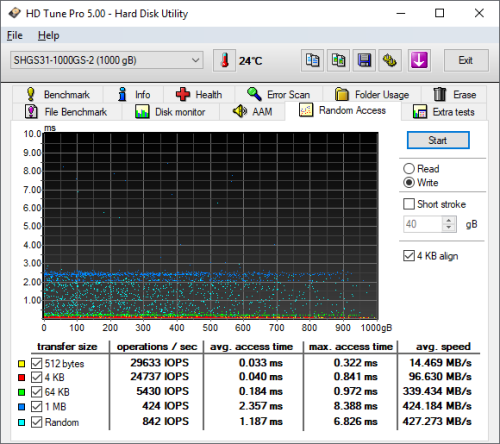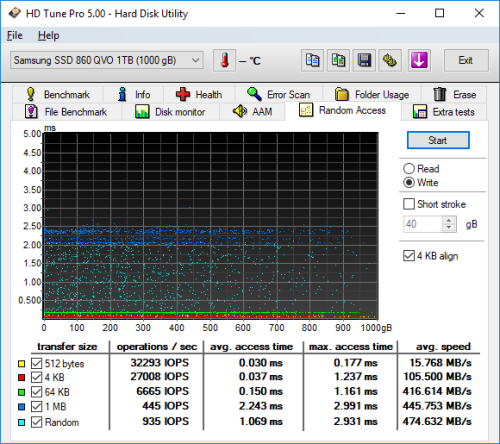
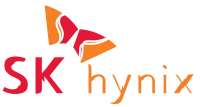
Model: SK hynix Gold S31 1TB Solid State Drive
Manufacturer: SK hynix
Provided By: SK hynix
As one of the biggest names in the semiconductor market, SK hynix doesn't need much of an introduction. Founded in 1983 as Hyundai Electronic Industrial Co., Ltd., the company quickly made its mark by producing Korea’s first 16Kb SRAM. Since then, SK hynix has continued to lead the industry with smaller, faster and lower power semiconductors. Today, they are the world's second-largest memory chipmaker as well as the third-largest semiconductor company. Their memory, NAND flash and CMOS image sensors are found in products from some of the biggest names in the computer industry including Apple, ASUS, Dell and HP.
With its background in NAND flash, it should come as no surprise that SK hynix is a major player in the SSD industry. Until recently though, they've stayed behind the scenes, supplying consumer and enterprise drives to PC OEMs. However, with the launch of its new Gold S31 SSD, the company is looking to get a piece of the retail market. Aimed at gamers, designers and content creators, the Gold S31 is the first of SK hynix's new SuperCore series of consumer SSDs. Designed and built completely in-house, the drive is powered by the company's own "Quartz" controller and is available with up to 1TB of their 72-layer 3D TLC NAND flash.
The Gold S31 is available in 250GB, 500GB and 1TB capacities. For this review, SK hynix sent us the 1TB version of the drive which is capable of delivering up to 560 MB/s sequential read and 525 MB/s sequential write speeds as well as up to 95,000 random read and 87,000 random write IOPS.
| SK hynix Gold S31 1TB Solid State Drive | |||||||||||||||||||||||||||||||||||||||||||
General Specifications
Performance
Reliability
Power Consumption
Environmental
Dimensions and Weight
Other Features
|
Needless to say, this is only a taste of what the Gold S31 has to offer. To give you an idea of what to expect, we'll take a closer look at SK hynix's new SSD and then see how well it performs. Does the Gold S31 have what it takes? More importantly, is it the best bang for your buck? Keep reading as we find out.
The Gold S31 comes in a simple, yet attractive, black box with what appears to be a large, gold "nugget" on the front. Unfortunately, there isn't a lot of information regarding the drive's specification or features. If you want detailed product information, you will need to visit SK hynix's website.
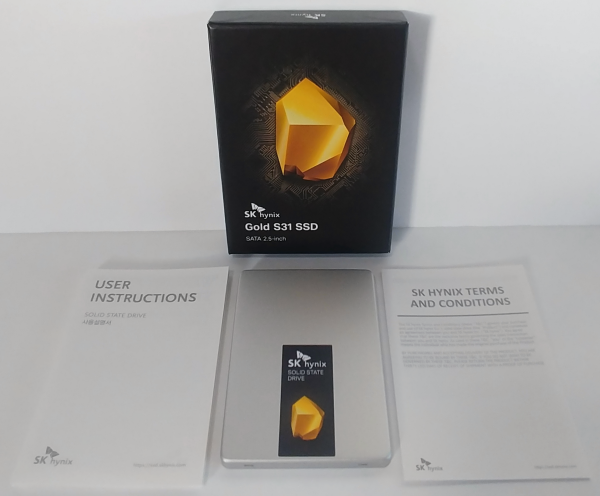
Like most manufacturers, SK hynix doesn't include a lot of extras with the Gold S31. Aside from the SSD, the only other things in the box were a couple of small, fold out guides containing warranty information as well as some brief installation instructions.
Physical Features:
The Gold S31 looks very similar to other 2.5-inch SSDs on the market today. The drive's outer casing is made entirely out of metal, and along with it being strong and durable, the textured finish looks great. On the top of the Gold S31 there is also a black sticker with the same branding and gold "nugget" that is found on the box.

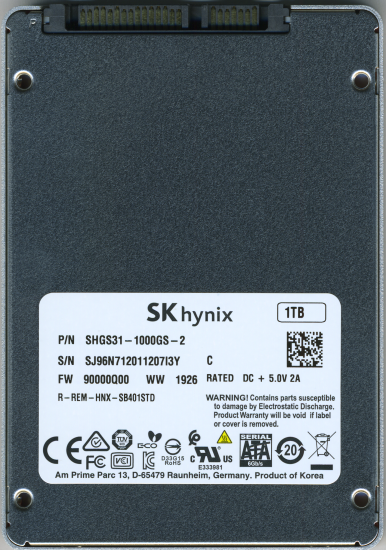
The Gold S31 is the first drive to utilize SK hynix's "Quartz" SH87830CC controller. Aside from the fact that it was designed and produced in-house, very little is known about the Quartz controller at this time.


For the 1TB version of the Gold S31, SK hynix has opted to use its own 72-layer 3D TLC NAND flash. Looking at the pictures above, you can see that there is a 512GB NAND flash package on either side of the PCB. The drive also has a single DRAM chip of unknown capacity that is used for caching.
The test system used in this review is equipped with an Intel Core i7-6700K CPU, GIGABYTE GA-Z170X-UD3 motherboard, 32GB (16GB x 2) of Crucial Ballistix Sport LT DDR4 memory, Samsung 960 PRO 512GB SSD and a GIGABYTE GeForce GTX 1060 WINDFORCE OC 6G graphics card. For the operating system, I installed a fresh copy of Windows 10 Enterprise.
To test the performance of SK hynix's Gold S31 SSD, I ran a series of benchmarks using CrystalDiskMark, HD Tach RW, ATTO Disk Benchmark, AS SSD, HD Tune Pro, Anvil's Storage Utilities, Iometer and PCMark 8. For comparison, I've also included test results from the ADATA Ultimate SU750, Samsung 860 QVO, Samsung 860 PRO, Crucial MX500, Plextor M8V, Crucial BX300, ADATA Ultimate SU900, Plextor S3C, Toshiba OCZ VX500, ADATA Ultimate SU800, Plextor S2C, Crucial MX300, Plextor M7V, PNY CS1311, OCZ Trion 150, PNY CS2211, Plextor M6V, Crucial BX200, OCZ Trion 100, Kingston HyperX Savage, Crucial MX200, OCZ Vector 180, Kingston BX100, Samsung 850 EVO M.2, Samsung 850 EVO mSATA, AMD Radeon R7, Silicon Power Slim S80, Samsung SSD 850 EVO, OCZ ARC 100, SanDisk Ultra II, Crucial MX100, SanDisk Extreme Pro and Samsung SSD 850 PRO.

As I mentioned earlier, the Gold S31 uses SK hynix's "Quartz" controller chip. Looking at the screenshot above, you can see that it performs equally well with both incompressible (0%) and compressible (100%) data.
CrystalDiskMark 5.1.2:
First, I ran a few quick tests using CrystalDiskMark. This benchmark tool measures the performance of a storage device by testing its sequential read and write speeds as well as its random read and write speeds using blocks 512K and 4K in size.
According to SK hynix, the 1TB version of the Gold S31 is capable of reading at 560 MB/s and writing at 525 MB/s. While the drive had no problems reaching its rated read speed, it came up a bit short in CrystalDiskMark's sequential write speed test.
The Gold S31 performed equally well when using highly compressible 0x00 (0 Fill) data. This time around, the drive was able to read at 563.1 MB/s and write at 493.9 MB/s.
HD Tach RW 3.0.4.0:
Next, I used HD Tach to test the Gold S31's read, write and burst speeds as well as its seek times and CPU usage.

Looking at the screenshot above, you can see that the Gold S31 had average read and write speeds of 451.2 MB/s and 416.7 MB/s respectively, as well as a burst speed of 404.8 MB/s.
ATTO Disk Benchmark 2.46:
I also used ATTO Disk Benchmark to test the Gold S31's sequential read and write speeds. The tests are run using blocks ranging in size from 0.5KB to 8192KB and the total length set to 256MB.
When tested with ATTO, the Gold S31's read speeds topped out at about 560 MB/s and its write speeds at 492 MB/s.
AS SSD:
AS SSD is a benchmark designed specifically for solid state drives. The application contains five synthetic tests which are used to determine the sequential and random read and write performance of a drive.
AS SSD also includes a copy benchmark. This test copies an ISO (two large files), program (many small files) and game (small and large files), returning the speed and duration of each.
HD Tune Pro 5.00:
Next, I ran a series of tests using HD Tune Pro. This hard disk utility measures a drive's performance by testing its sequential read and write speeds as well as its access time, burst rate and CPU usage. For this review, I'm also going to use it to benchmark the Gold S31's random read and write speeds, random access times and the number of operations per second.
The Gold S31 performed relatively well when benchmarked with HD Tune. The drive had average read and write speeds of 487.8 MB/s and 419.7 MB/s, respectively, and a burst rate of 431.2 MB/s when reading.
When reading 4KB blocks, the Gold S31 reached 21,120 IOPS and had an average speed of 82.501 MB/s. The drive was faster when writing, reaching 24,737 IOPS with an average speed of 96.630 MB/s.
Anvil's Storage Utilities:
Anvil's Storage Utilities is another benchmark designed with SSDs in mind. The standard storage benchmark measures a drive's performance by testing its transfer speeds, access times and IOPS.

Iometer:
Lastly, I ran a series of tests using Iometer. This tool can be configured to benchmark a number of things. In this case, I used it to measure the Gold S31's read and write speeds and the number of operations per second. The tests were run using random bytes and a queue depth of 3.

The Gold S31's performance was very similar to what we saw in our other tests. The drive was able to read at 532.24 MB/s and write at 452.77 MB/s.

The Gold S31 also performed fairly well when doing random reads and writes. In our tests, the drive was able to read at 161.51 MB/s and write at an impressive 318.82 MB/s.

According to SK hynix, the 1TB version of the Gold S31 is capable of 95,000 IOPS when reading and 87,000 IOPS when writing 4K blocks. In our tests, the drive reached 41,346 random read IOPS and 81,618 random write IOPS. Increasing the queue depth had little impact on the Gold S31's random write performance. However, with the queue depth set to 32, the drive was able to reach 99,470 random read IOPS.
Vantage PCMark 8 - Storage Test:
PCMark 8 is a complete benchmark for Windows. It includes five benchmark tests, each designed around a specific scenario. The storage benchmark measures drive performance using real-world traces recorded from Adobe Creative Suite, Microsoft Office and a selection of popular games.

PCMark 8 also includes a consistency test which measures the performance consistency and degradation tendency of a storage system. The test reports the performance level at the start, the degraded steady-state and the recovered state as well as the number of iterations required to reach them. For this test, we are focusing on the Adobe Photoshop (Heavy) trace and will look at both the bandwidth and latency of the drive
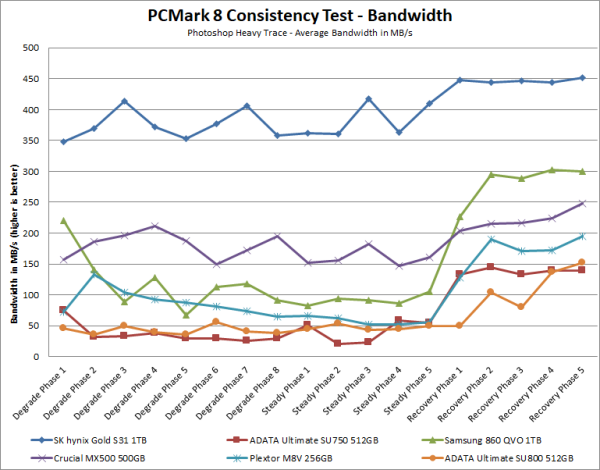

The Gold S31 did surprisingly well throughout PCMark's consistency test. Its performance throughout the degradation and steady state phases was better than both the Samsung 860 QVO and Crucial MX500. The Gold S31's bandwidth also increased during the recovery phase, topping out at about 451 MB/s.
TRIM Performance:
While SSDs offer many benefits, there are some downsides to using flash memory. One of the biggest issues people run into is performance degradation. Over time, an SSD will run out of fresh blocks and will have to write over data the file system has marked as deleted. This procedure is very complicated and can slow an SSD's write speeds considerably.
To fix this problem, most manufacturers have added TRIM support to their SSDs. The TRIM command allows an operating system, such as Windows 7, to tell an SSD which data blocks are no longer in use. Using this information, the drive pro-actively erases these blocks and adds them to the free block pool.

To test the Gold S31's TRIM function, I first put the drive in a "dirty" state. I used Iometer to fill the entire drive and then ran a random write test for 30 minutes. Looking at the screenshot below, you can see that the Gold S31's average read and write speeds dropped to 149.7 MB/s and 146.2 MB/s, respectively.

SK hynix Gold S31 - Dirty
To see how well the Gold S31 could recover, I let the computer sit for about 30 minutes and then reran the test. The drive wasn't able to reach the factory fresh performance shown in our earlier tests. However, its average write speed jumped up to 375.8 MB/s.
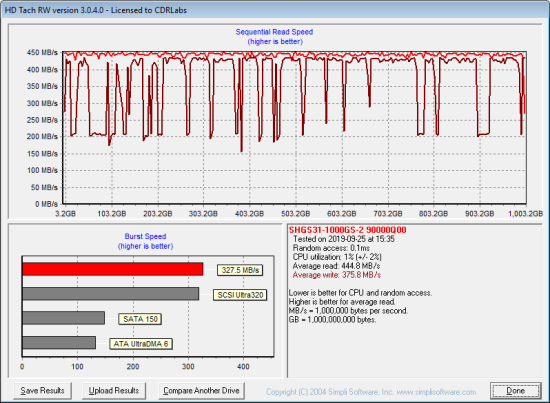
SK hynix Gold S31 - After Trim
Lastly, I used Parted Magic to perform a secure erase on the Gold S31. With the drive wiped clean, it had average read and write speeds of 444.1 MB/s and 398.9 MB/s, respectively.

SK hynix Gold S31 - Secure Erase
Final Thoughts:
The Gold S31 is the first SSD from SK hynix to come through the 'Labs and to be honest, they could not have made a better first impression. Designed and built entirely in-house, this consumer-oriented drive combines the company's own "Quartz" controller with their 72-layer 3D TLC NAND flash to deliver performance, quality and reliability at a competitive price. In our sequential read and write tests, the 1TB version of the Gold S31 was able to read at speeds as high as 563 MB/s and write at speeds in excess of 492 MB/s. It also had no problems holding its own in our random write tests, producing more than 81,000 IOPS at low queue depths.
Currently, the Gold S31 is offered exclusively through Amazon. Prices start at $50 for the 250GB drive and go up to $119 for the 1TB version reviewed here. SK hynix expects to offer the Gold S31 to other North American and European markets starting next year.

Highs:
- Available in 250GB, 500GB and 1TB capacities
- Equipped with 72-layer 3D TLC NAND
- Good sequential and random read and write performance
- Ultra-slim design
- Reasonably priced
- 5 year warranty
Lows:
- Does not support hardware based encryption
- Limited availability

